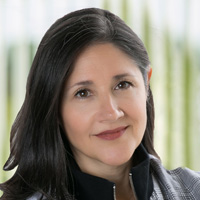Kids Not Ready for Their Inheritance? Consider a Private Foundation
The benefits of starting your own foundation extend far beyond tax savings: It can help preserve your family’s wealth and unity.


For families of means, there are plenty of reasons to consider establishing a private foundation: tax savings, control over assets and the ability to give back using a broad range of philanthropic capabilities, such as program-related investments and grants to individuals. But for many of our clients, the most important benefits of a foundation are those that help them ensure that the next generation will be responsible stewards of their values and wealth.
The Ideal Training Ground
A private foundation is like “an estate plan in action,” because the skills needed to run an effective foundation are identical to those required for the next generation to manage their inheritance. By learning how the foundation maintains its investments, conducts due diligence before making a grant and measures its impact, heirs learn essential business skills. And by participating in group decision making, advocating for their positions and resolving disagreements with other members, young people acquire the social skills that are key to leadership.
Beyond the acquisition of financial and business skills, many families of wealth are concerned that their success will kill their children’s ambition — especially if their wealth passes to their children before they have had a chance to develop sufficient maturity. For these families, a foundation is a perfect fit, because it enables the next generation to participate in wealth and understand both its power and responsibility — all without taking control of it. By having a say in the foundation's governance and work, children witness the impact of their decisions and learn the value of money in ways no lecture can ever hope to match.

Sign up for Kiplinger’s Free E-Newsletters
Profit and prosper with the best of expert advice on investing, taxes, retirement, personal finance and more - straight to your e-mail.
Profit and prosper with the best of expert advice - straight to your e-mail.
Foundation for a Legacy of Giving
When a family decides to establish a private foundation, the process naturally sparks discussions about what the family wants to accomplish with their charitable funds. These conversations can be a springboard for exploring the family’s priorities, offering a rare opportunity to uncover what matters most to individuals and what core values the family shares. Ultimately, the family can distill this conversation's fruits into an external mission statement for the foundation. However, this process might also give rise to an internal mission for the family itself.
Whereas the external mission details what the family wants to accomplish for others, an internal mission focuses on the family’s goals for itself. Many Foundation Source clients use an internal mission statement to articulate their intentions to strengthen family bonds, forge a distinctive identity and optimize time spent together.
Connection to Each Other and Future Generations
In this day and age, it’s common for families to spread out all over the globe. Education, job opportunities and marriages exert their gravitational forces, pulling family members away from one another. For many families, the foundation becomes the glue that holds the family together, even when they live in different ZIP codes and time zones. Having a common cause and a formal vehicle for advancing it provides a “non-Thanksgiving” reason to meet regularly.
Finally, because private foundations can be established to exist in perpetuity, they can link the founders to generations of the family they will likely never meet. The foundation conveys the founders’ cherished values, hopes and dreams from one generation to the next. And, as the foundation’s assets grow in a tax-advantaged environment, it can become a philanthropic heirloom of substantial worth, empowering each generation to embrace the family’s legacy and add to it themselves.
Get Kiplinger Today newsletter — free
Profit and prosper with the best of Kiplinger's advice on investing, taxes, retirement, personal finance and much more. Delivered daily. Enter your email in the box and click Sign Me Up.

Hannah Shaw Grove is the chief marketing officer of Foundation Source, founder of "Private Wealth" magazine and author of 11 data-based books and hundreds of reports and articles on topics relating to the creation, management, disposition and transfer of wealth. Hannah has previously been the chief marketing officer at Apex Clearing, iCapital Network and Merrill Lynch Investment Managers and is a cum laude graduate of Harvard University. She holds the FINRA Series 6, 7, 24, 26 and 63 licenses.
-
 Two Don'ts and Four Dos During Trump's Trade War
Two Don'ts and Four Dos During Trump's Trade WarThe financial rules have changed now that tariffs have disrupted the markets and created economic uncertainty. What can you do? (And what shouldn't you do?)
By Maggie Kulyk, CRPC®, CSRIC™
-
 I'm Single, With No Kids: Why Do I Need an Estate Plan?
I'm Single, With No Kids: Why Do I Need an Estate Plan?Unless you have a plan in place, guess who might be making all the decisions about your prized possessions, or even your health care: a court.
By Cynthia Pruemm, Investment Adviser Representative
-
 Two Don'ts and Four Dos During Trump's Trade War
Two Don'ts and Four Dos During Trump's Trade WarThe financial rules have changed now that tariffs have disrupted the markets and created economic uncertainty. What can you do? (And what shouldn't you do?)
By Maggie Kulyk, CRPC®, CSRIC™
-
 I'm Single, With No Kids: Why Do I Need an Estate Plan?
I'm Single, With No Kids: Why Do I Need an Estate Plan?Unless you have a plan in place, guess who might be making all the decisions about your prized possessions, or even your health care: a court.
By Cynthia Pruemm, Investment Adviser Representative
-
 Most Investors Aren't as Diversified as They Think: Are You?
Most Investors Aren't as Diversified as They Think: Are You?You could be facing a surprisingly dangerous amount of concentration risk without realizing it. Fixing that problem starts with knowing exactly what you own.
By Scott Noble, CPA/PFS
-
 Will My Children Inherit Too Much?
Will My Children Inherit Too Much?If you worry about how your children will handle an inheritance, you're not alone. Luckily, you have options — from lifetime gifting to trusts — that can help.
By Mallon FitzPatrick, CFP®, AEP®, CLU®
-
 Charitable Giving Lessons From Netflix's 'Apple Cider Vinegar'
Charitable Giving Lessons From Netflix's 'Apple Cider Vinegar'Charity fraud is rife, and a Netflix series provides a timely warning about donating money to a good cause without looking into its background.
By Peter J. Klein, CFA®, CAP®, CSRIC®, CRPS®
-
 Four Takeaways From Filing Your Taxes to Boost Your Financial Future
Four Takeaways From Filing Your Taxes to Boost Your Financial FutureNow that another tax season is in the rearview mirror for most of us, what lessons can you take from what you learned about your finances to plan for the future?
By Kate Winget
-
 What Claims Adjusters Are Thinking vs What They're Saying
What Claims Adjusters Are Thinking vs What They're SayingAfter a natural disaster, few of us are at our best, but here's what to keep in mind when you're interacting with your insurance company's claims adjuster.
By Karl Susman, CPCU, LUTCF, CIC, CSFP, CFS, CPIA, AAI-M, PLCS
-
 Looking to Make a Job Change? How to Stand Out Like a Pro
Looking to Make a Job Change? How to Stand Out Like a ProTo make a strong first impression in interviews or when networking, skip your job title and work history and use an opening gambit that highlights your talents.
By Anne deBruin Sample, CEO